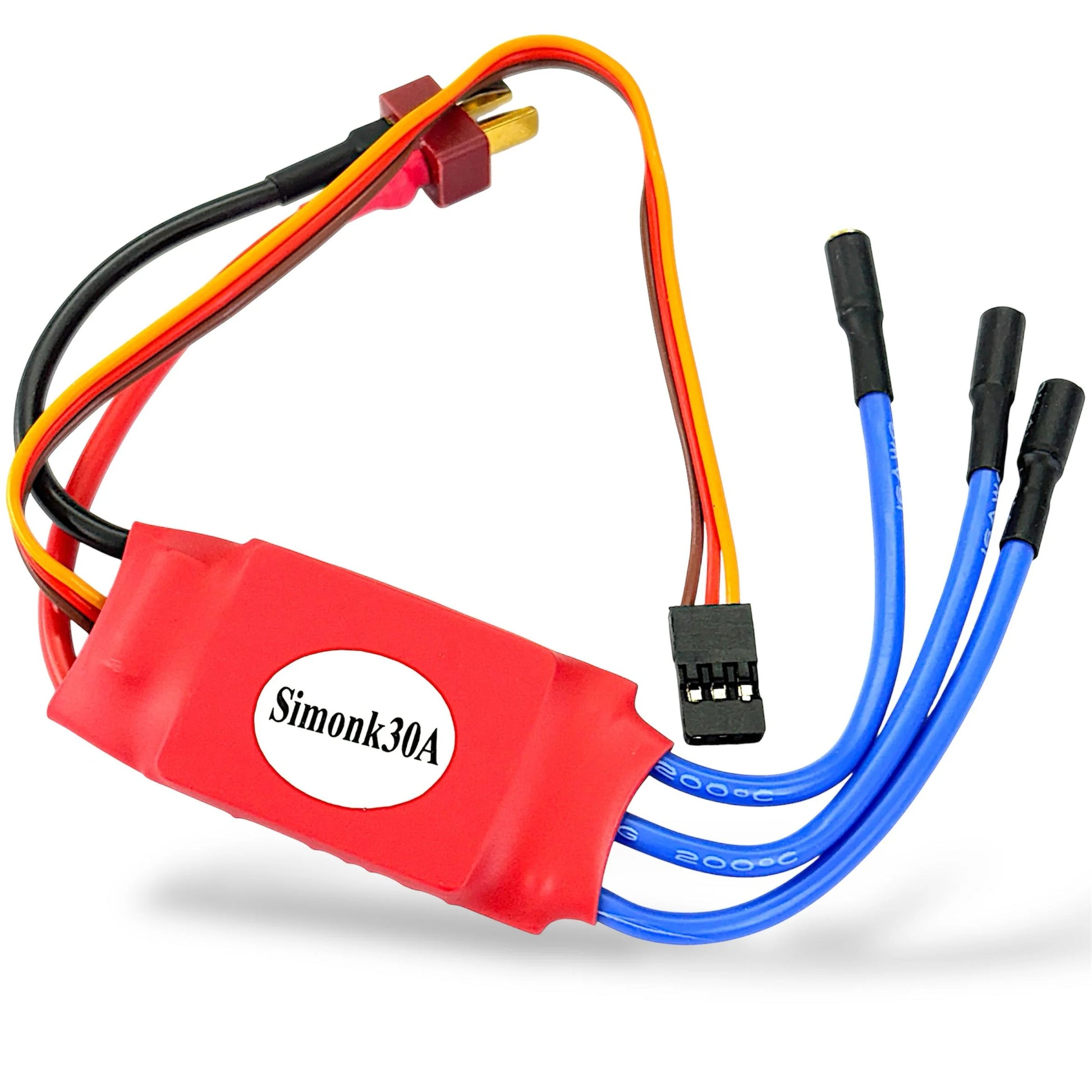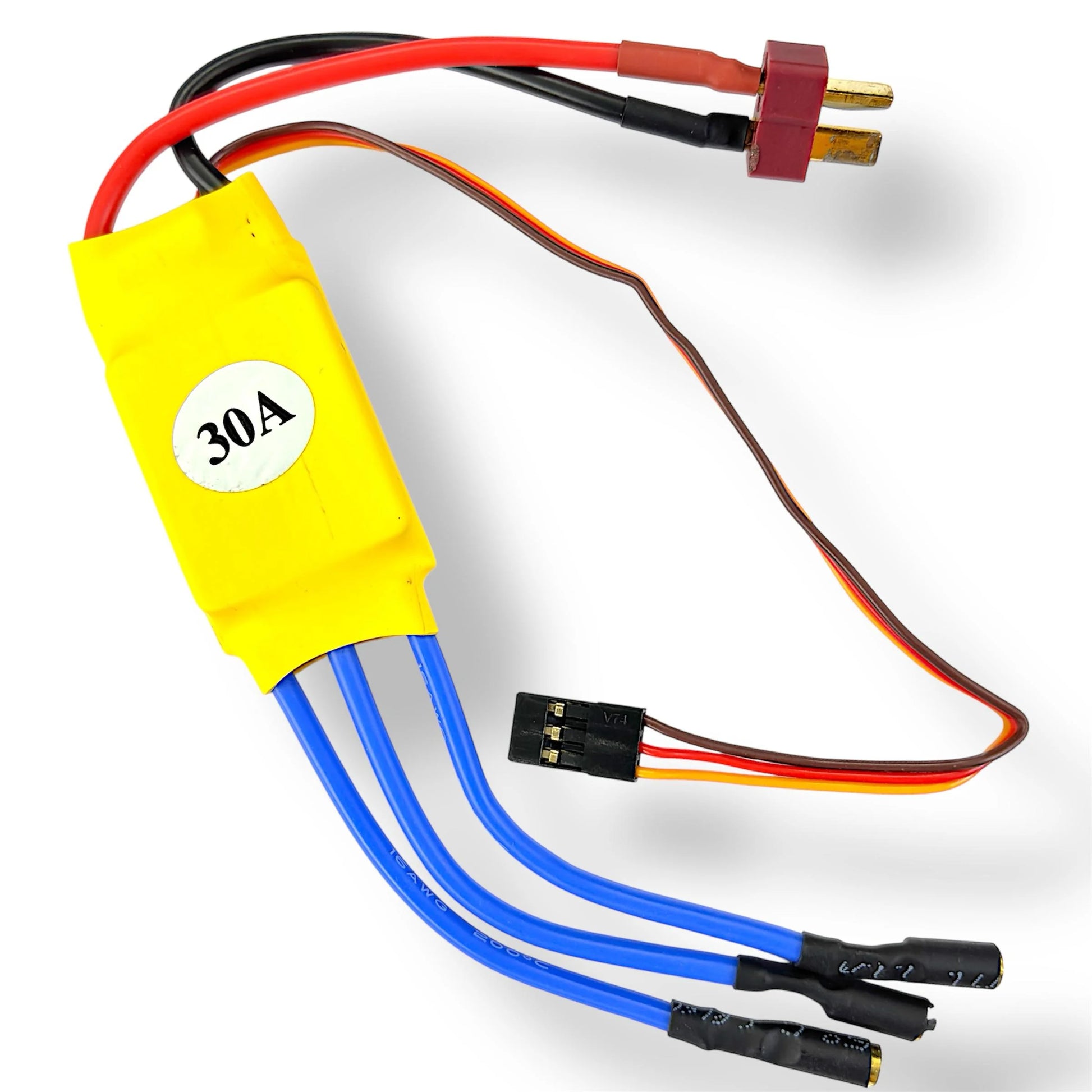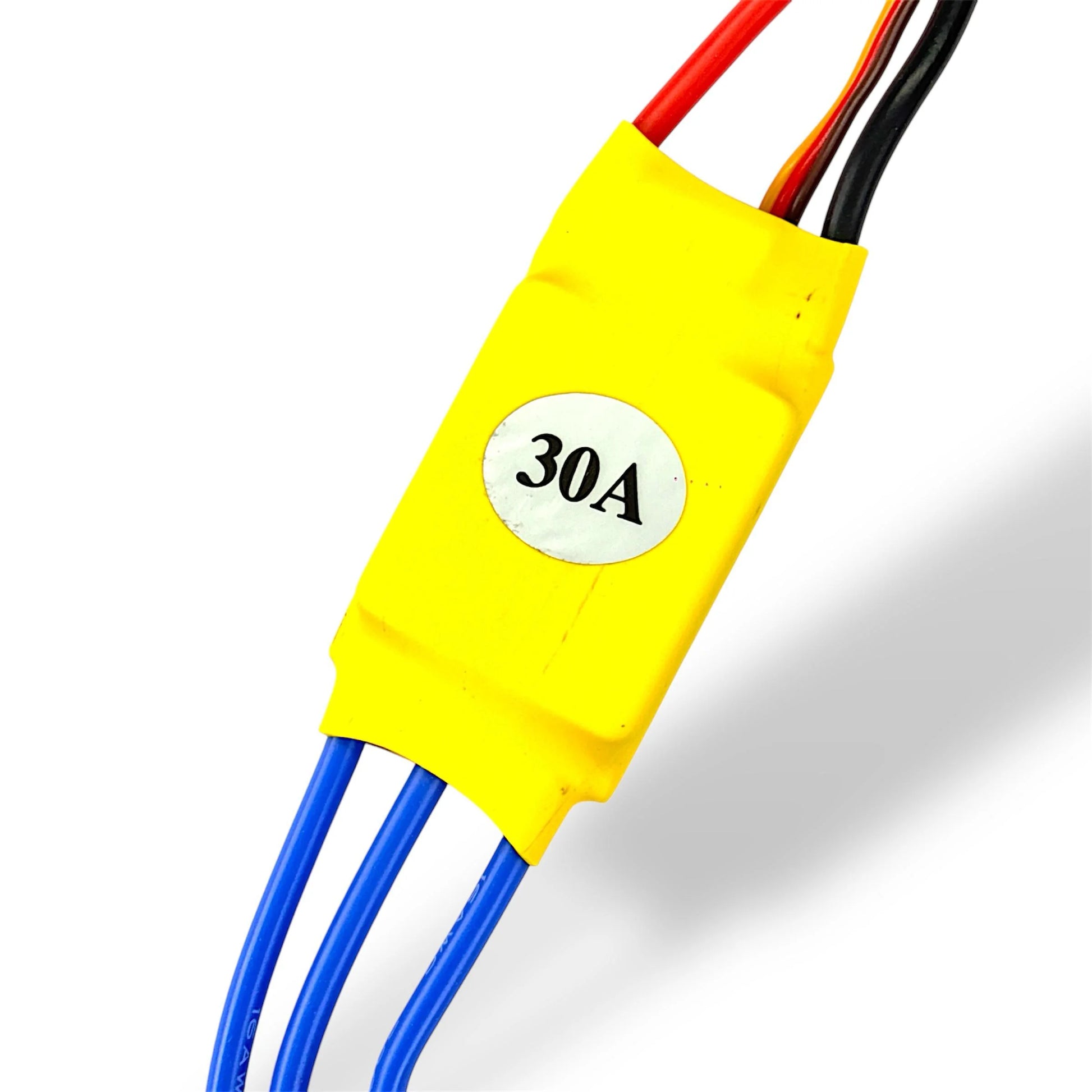Harish Projects
ESC (Electronic Speed Controller) 30A
ESC (Electronic Speed Controller) 30A
Couldn't load pickup availability
Share
Specification
- Current Rating: 30A (Amperes)
- Voltage Input Range: 2S (7.4V) or 3S (11.1V) LiPo batteries
-
Connectors:-
- Motor Connectors: Typically three wires for connecting to the motor.
- Battery Connectors: Usually two wires for connecting to the battery.
- Signal Connector: Connects to the receiver to receive control signals.
Description
An Electronic Speed Controller (ESC) is a device used in the field of radio-controlled (RC) electronics, particularly in the context of RC vehicles like cars, boats, helicopters, and drones. The ESC serves as a crucial component for controlling the speed and direction of an electric motor. Here’s a description of an ESC with a 30A rating:
1. Current Rating (30A): The “30A” indicates the maximum current (in amperes) that the ESC can handle. In this case, the ESC is designed to handle a continuous current of up to 30 amperes. This rating is important as it determines the size and type of motor the ESC can effectively control.
2. Voltage Input: ESCs are designed to operate within a specific voltage range. Commonly, they support a range of LiPo (Lithium Polymer) battery voltages, such as 2S (7.4V) or 3S (11.1V). Make sure the ESC is compatible with the voltage of your power source.
3. BEC (Battery Eliminator Circuit): Some ESCs come with a built-in BEC, which is a circuit that provides a regulated voltage output to power the receiver and other onboard electronics without requiring a separate battery. The BEC voltage is usually 5V, suitable for powering most RC receivers and servos.
4. Programming Features: ESCs often have programmable features, allowing users to customize settings such as brake strength, throttle range, and motor timing. Programming can be done using a programming card, transmitter stick commands, or a computer interface, depending on the specific ESC model.
5. Motor Compatibility: Ensure that the ESC is compatible with the type and size of the electric motor you plan to use. Different motors have varying electrical requirements, and the ESC must match those specifications for optimal performance.
6. Protection Features: Many ESCs include built-in protection features such as thermal protection (to prevent overheating), low-voltage cutoff (to protect the battery from over-discharge), and over-current protection. These features enhance the durability and safety of the ESC and connected components.
7. Connectors: ESCs typically come with standard connectors for easy installation. Common connectors include three wires for connecting to the motor and two wires for connecting to the battery. Make sure the connectors match those on your motor and battery.
Remember to consult the specific user manual provided by the ESC manufacturer for detailed instructions on installation, programming, and usage. Additionally, adhere to safety guidelines and precautions when working with electronic components and power sources.
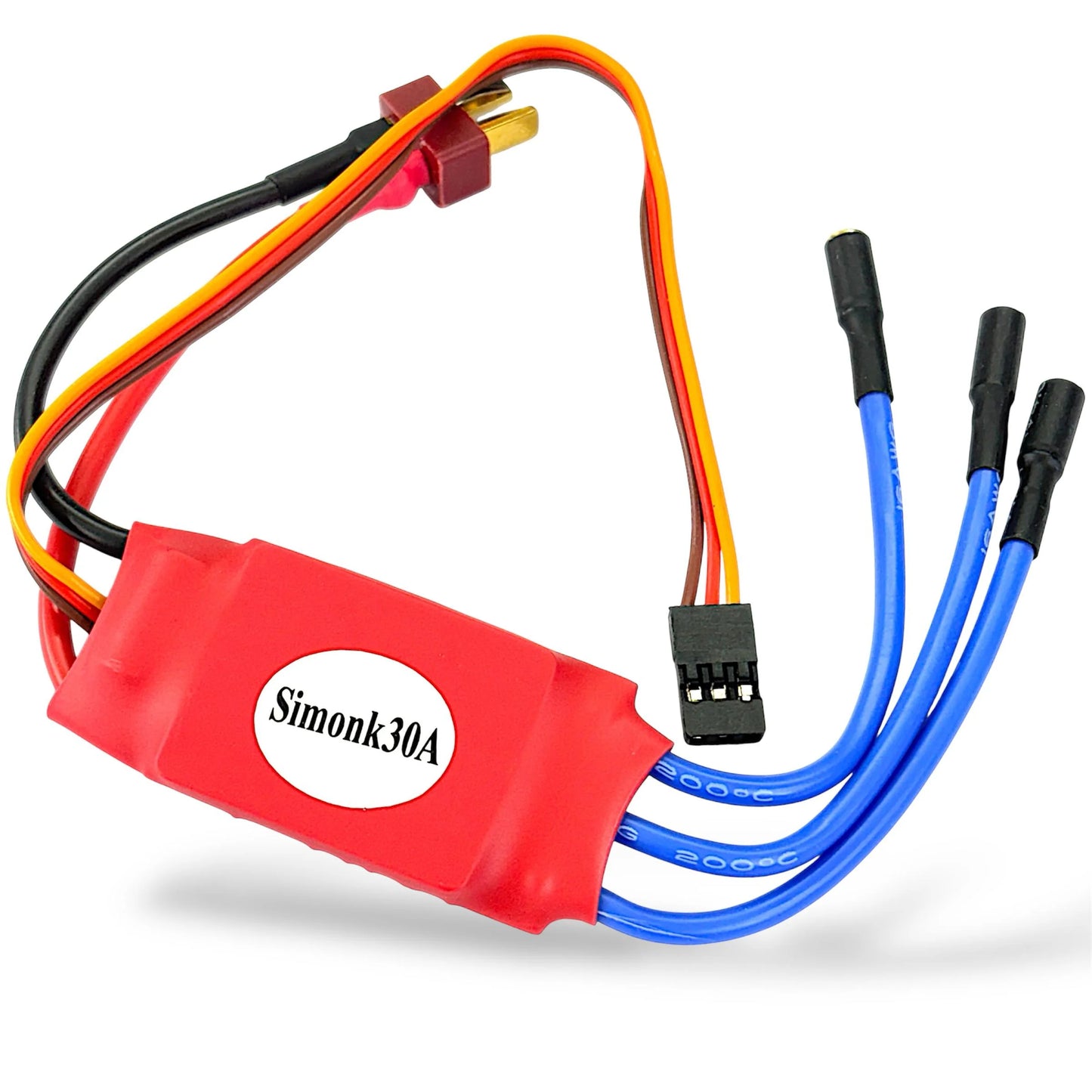
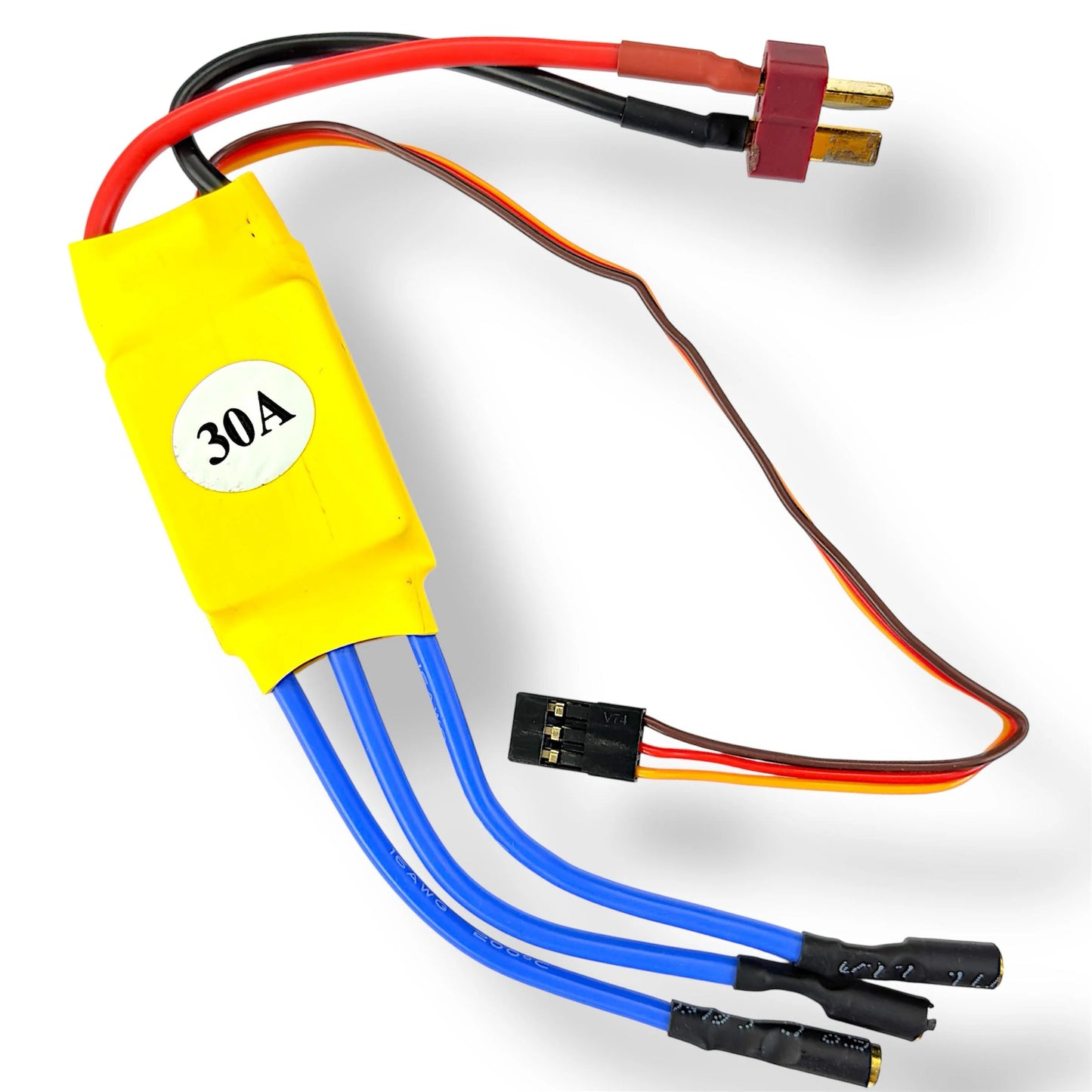
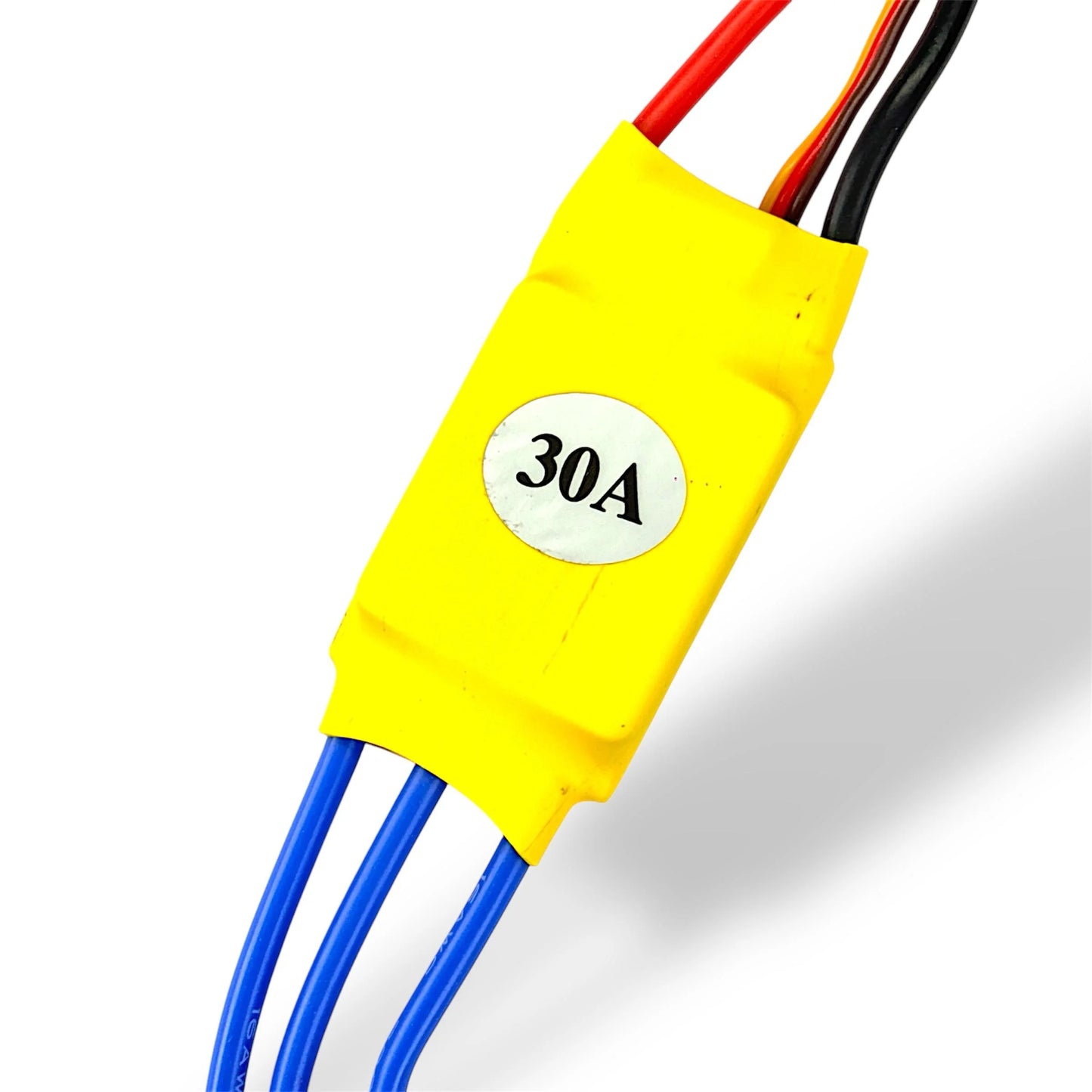
It was good and well working but it quality was a bit low for its price

